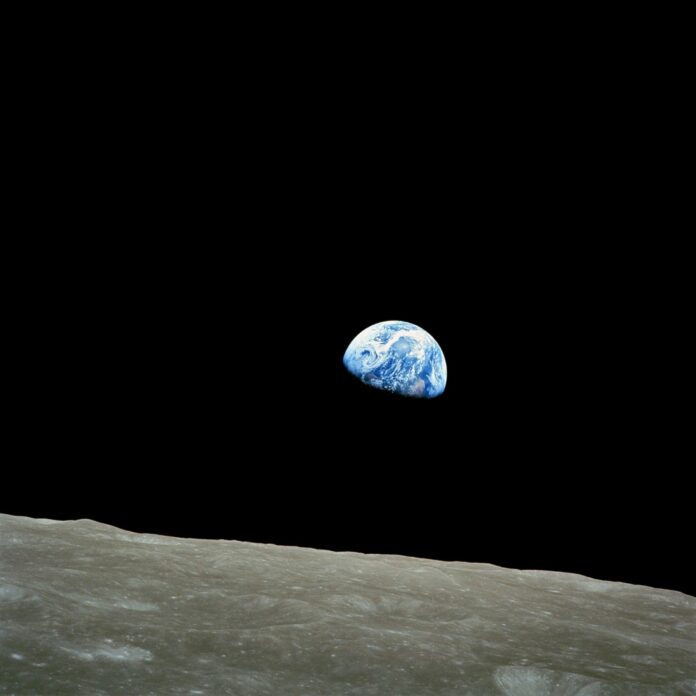Have you ever looked up at the stars in the sky at night and wondered what the origins of Earth are? How was the moon created? How did human life begin and evolve on Earth?
Do you subscribe to religious beliefs you were taught in childhood? Or do you place greater faith in a scientific explanation? Maybe you think there is some probability a little of both can be true?
This question about our home planet, our moon, and our very existence has held and captivated the imagination of humans for eons. Images of a magnificent starry night, the brightness of the morning sun, wispy clouds doing a slow dance around the moon on a clear night, and the soft music of raindrops falling on the ground during a spring rain all beg the question: How did this all begin? How did we come to exist as humans on Earth?
What is Earth’s story?
Today, we will attempt to find an answer to this question by exploring several different theories surrounding the birth of our planet and thoughts regarding the creation of life.
- Nebular Hypothesis: The Nebular Hypothesis is one of the most accepted, if not the most accepted, theories that attempt to explain how Earth came into existence. The hypothesis suggests a solar nebula, an enormous cloud of gas and dust, collapsed under its gravity 4.6 billion years ago. While this was happening, it spun faster and faster until most of it became a flat disk, creating the sun. Debris left of the solar nebula is what created our solar system – Earth, our moon, and all the other planets and their moons.
- Giant Impact Hypothesis: To explain how simultaneously similar and different the Moon and Earth are, the Giant Impact Hypothesis posits that the origins of today’s Earth and our moon resulted from a planet about the size of Mars called Theia crashing into a young Earth. During the crash, 4.6 billion years ago, pieces of Theia broke off and merged with pieces from Earth to form the Moon. Ergo, Earth is of the moon, and the moon is of Earth.
- Panspermia Hypothesis: In Earth’s history, comets, meteorites, asteroids, and even other planets have regularly come close to Earth. Some have even crashed into us. The Panspermia Hypothesis proposes that life here could have begun from microorganisms carried here by other cosmic bodies such as those mentioned above and later spread through Earth, imbedded themselves here, and eventually evolved to produce the necessary components for life to evolve here. Did you know that seventy-one percent of the surface of the Earth is water? This hypothesis submits hydrothermal vents found in deep seas played a crucial role in the origins of life on Earth. These vents generate heat. They contain high levels of chemicals, minerals, and nutrients, all crucial elements necessary for forming early life on Earth.
- Extraterrestrial Seeding Hypothesis: The Extraterrestrial Seeding Hypothesis contemplates the idea that life on Earth could have been seeded through natural events. The idea is that microscopic organisms hitched a ride with meteorites or got blown to Earth with interstellar dust particles and endured the conditions of space only to find the right environment that allowed them to thrive and advance to the different life forms we see today.
- RNA (Ribonucleic Acid) World Hypothesis: RNA is an acid found in all living cells, similar to DNA. The RNA World Hypothesis presents the idea that “primordial forms of life,” or “early life,” depended upon a simple RNA molecule that could duplicate itself and evolve to develop multifaceted organisms like plants, fungi, and animals without other chemicals.
- Electric Spark Theory or The Spark of Life Theory: Referring back to The Nebular Hypothesis, The Electric Spark Theory, AKA The Spark of Life Theory, is based on the idea that an electrical spark during the creation of the solar system created a prehistoric type of matter that became the first form of life in a single second during the solar system’s formation.
- The Clay Life Theory: This sounds like something out of a science fiction novel, but the relatively new Clay Life Theory may have some legs. This theory does not pose the idea that humans come from clay but rather the biochemicals that make life possible. Clay contains a mix of minerals that may play a role in the origins of life.
- Metabolism First or The Oparin-Haldane Theory: This theory presents the idea that life was established from spontaneously formed molecules that acted as enzymes, being held together by electrostatic forces. These were most likely the earliest cells.
- Ice World Hypothesis: The Ice World Hypothesis suggests that the oceans and land surfaces of Earth were covered in ice a minimum of two times between 2.4 billion and 580 million years ago from the Poles to the Equator – in other words, this was an ice age. The idea is that ice is supposed to be the most basic of elements of all cosmic processes. Though this hypothesis has not been well received by scientists, ice can be found in certain dark areas of the moon. Indeed, water was discovered at the center of the Milky Way.
- Bonus: Are we in an Ice Age right now?:According to the National Centers for Environmental Information, Earth is in an interglacial period right now. What does that mean? An interglacial period is when there is a period of warmer temperatures globally lasting many thousands of years. Doesn’t this sound like global warming?


